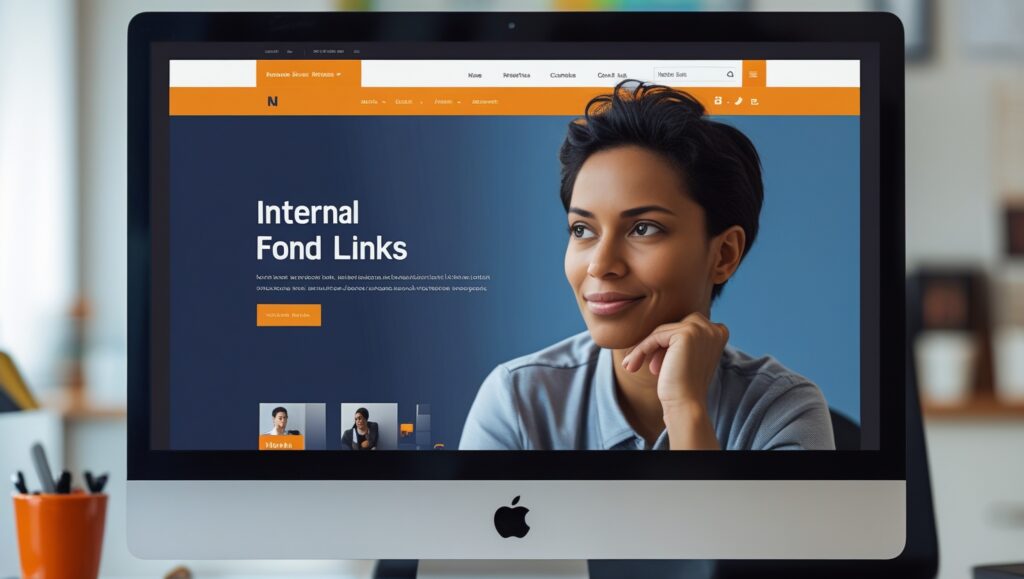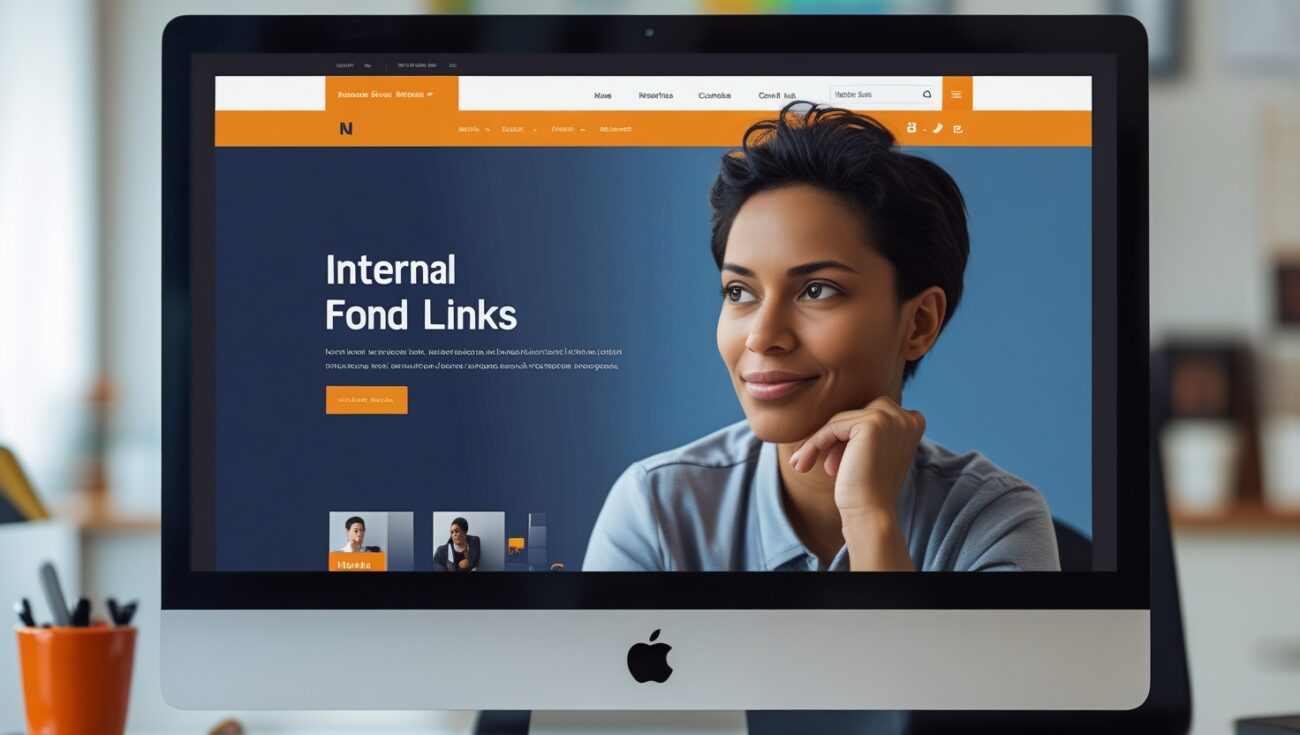How to Use Internal Links to Keep Visitors on Your Website Longer
Have you ever worried about your website’s bounce rate? Or wondered why visitors seem to leave your pages so quickly? I certainly have. For years, I was so focused on getting traffic that I didn’t pay enough attention to what happened after a user landed on my site. My bounce rate was high, and my time on page was low. I realized that getting traffic was only half the battle; the real victory was in keeping them on my site.

Table of Contents
The answer, I discovered, was right in front of me all along: a smart internal linking strategy. Done correctly, internal links are not just for SEO; they are a powerful tool for improving user engagement and guiding visitors to the most valuable content on your site. By using them strategically, you can transform your website from a one-page stop into a comprehensive resource that visitors want to explore.
The Connection Between Internal Links and User Engagement
Google pays close attention to how users interact with your website. Metrics like time on page and bounce rate are key signals of user satisfaction. A low bounce rate and a high time on page tell Google that a user found your content valuable and that your site is a high-quality resource.
- The “Next Step” Idea: A good internal link provides a clear, natural “next step” for your user. It’s like a signpost on a journey. If you are reading an article about productivity and you see a link to “the best productivity apps,” it’s a natural, helpful, and logical next step that keeps you on the site.
- The “Deep Dive” Idea: It allows users to go on a “deep dive” into a topic without leaving your site. If they are reading an article and a concept is mentioned that they are interested in, a well-placed internal link allows them to explore that concept without having to go back to Google.
The Two Most Important Rules for Keeping Visitors on Your Site
- Rule 1: Context is King: A link must be highly relevant to the content around it. Don’t just drop a link at the bottom of a page; embed it naturally within the prose. The sentence and paragraph should make the link feel like a helpful, logical part of the conversation.
- Rule 2: Use Strategic Anchor Text: The anchor text is the first thing a user sees. It sets their expectation. A descriptive phrase like “how to improve your bounce rate” tells the user exactly what to expect on the other side of the link. This builds trust and encourages clicks.
Practical Strategies for a Better User Journey
- Strategy 1: The “Related Content” Link: At the end of every blog post, add a section with 2-3 “related articles.” This is the easiest way to give a user a clear next step and reduce your bounce rate.
- Strategy 2: The “Jump-Off Point” Link: For a long, comprehensive article (a pillar page), use it as a “jump-off point” to other, more specific articles on your site. For example, if you are writing “The Ultimate Guide to SEO,” you can link to more specific articles on internal linking, backlinks, and keyword research.
- Strategy 3: The “Deep Dive” Link: When you mention a concept that a user might not know, link to it. For example, if you mention the term link equity, you can link to an article that explains it in more detail. This improves user experience and shows you are a true expert. A tool can help you find all of these deep-dive linking opportunities.
The Tool That Makes It Easy to Build a Better User Experience
Finding all the right places to link for a user is a hard, manual task. You would have to re-read every article on your site and try to find opportunities for a better user experience. This is where internal linking automation comes in. A tool can analyze your content and find the best places to keep a user engaged, all while building a stronger SEO profile. Ready to improve your user engagement and boost your SEO at the same time? Discover how Linkbot can help you.
Conclusion: Link for the User, Win with Google
A well-linked website is a successful website. By focusing on building an internal linking structure that serves your user first, you will naturally improve the metrics that Google values most. Stop worrying about your bounce rate and start building a better, more helpful experience for your visitors. When you link for the user, you win with Google every single time.
My journey taught me that a major mistake is seeing SEO as a mystery. By implementing a user-focused internal linking strategy, I made the mental shift from being a spectator to an active participant in my website’s success. This simple realization took the overwhelm out of SEO and turned it into a series of logical, manageable steps that I could control.
The long-term, compounding effect of this user-centric approach is what makes it so powerful. Each time you add a thoughtful, relevant link, you are not just performing a task; you are building your website’s authority, one link at a time. These small, consistent improvements add up to a significant competitive advantage over the long term, making your website an increasingly powerful asset.
I can say from personal experience that there is a special kind of satisfaction that comes from seeing a direct correlation between a new link and a ranking boost. It’s the feeling of taking a tangled mess and organizing it into a clean, logical network. The result is a website that just feels better to navigate, for both users and the people managing it.
A clean internal link profile also has a huge impact on your website’s overall trustworthiness and authority. When a user or a search engine bot lands on your page and sees a clear network of interconnected, relevant articles, it signals that you are a serious, comprehensive resource on the topic. This kind of professional organization is exactly what Google looks for.
The most important part of this foundational skill is building a consistent habit of linking. It’s not about a single audit and then forgetting about it. A good website is a living thing, and it needs regular maintenance to ensure your internal links stay clean, which is a key part of long-term SEO success.
I felt like I was finally in the driver’s seat of my SEO. For years, I had relied on external factors, which felt like I was giving up control of my SEO destiny. But by mastering a simple task like building my internal links, I was proactively building my site’s authority from the inside out, on my own terms, which was an empowering and exciting feeling.
By implementing a strategy that serves both SEO and conversions, you are also directly addressing Google’s E-E-A-T framework. You are demonstrating expertise by creating topical clusters, you are showing authority by linking from strong pages, and you are providing a better user experience, which is a key part of what Google looks for in a trustworthy website.
I’ll never forget the first time I applied my new internal link strategy to a page that was struggling to rank, and it shot up in the search results almost overnight. This was my “aha” moment. I realized that a strategic, well-placed link from a high-authority page was far more powerful than I ever thought possible.
One of the greatest benefits I got from using an automated tool to manage my link profile was the “to-do” list it provided. Instead of being overwhelmed by the sheer size of my website, the tool gave me a prioritized, actionable list of fixes to make. It transformed a monumental, frustrating task into a series of manageable steps that I could tackle in just minutes.
It’s crucial to understand the difference between a simple, generic link and one that’s part of a strategic, mapped plan. A simple link is a one-off connection. A link that’s part of a plan is a purposeful part of a larger network, designed to pass authority and guide a user. The latter is far more powerful.
Ultimately, mastering internal linking is a simple but powerful strategy that transforms a website’s foundation. It’s a low-cost, high-impact fix that can instantly improve your site’s health and SEO performance. It’s the kind of foundational SEO work that every website owner should prioritize.
My final piece of advice is to not be intimidated. Don’t worry about the high cost of manual labor; just focus on making your website a better place for your readers. You will be amazed at the progress you make and the results you can achieve.

